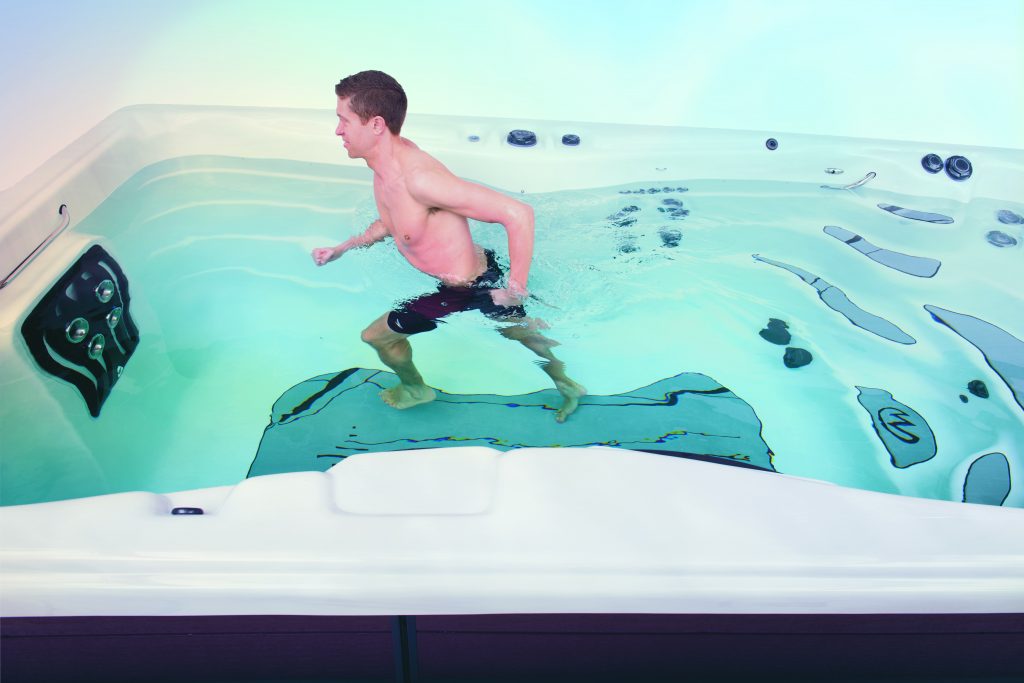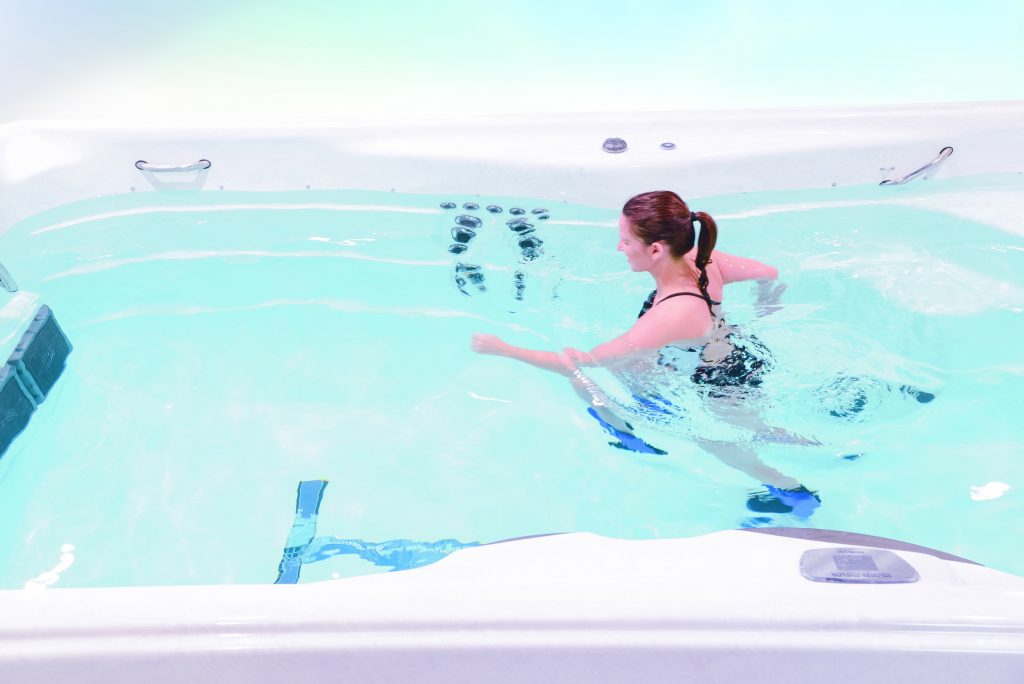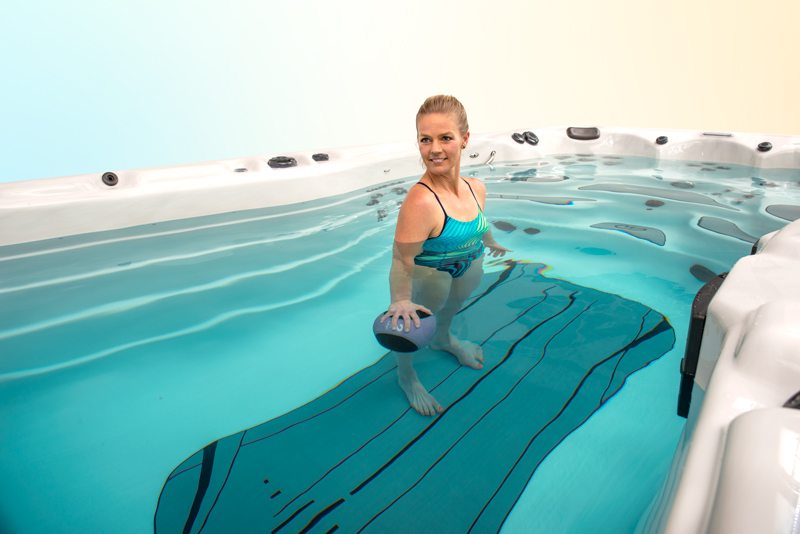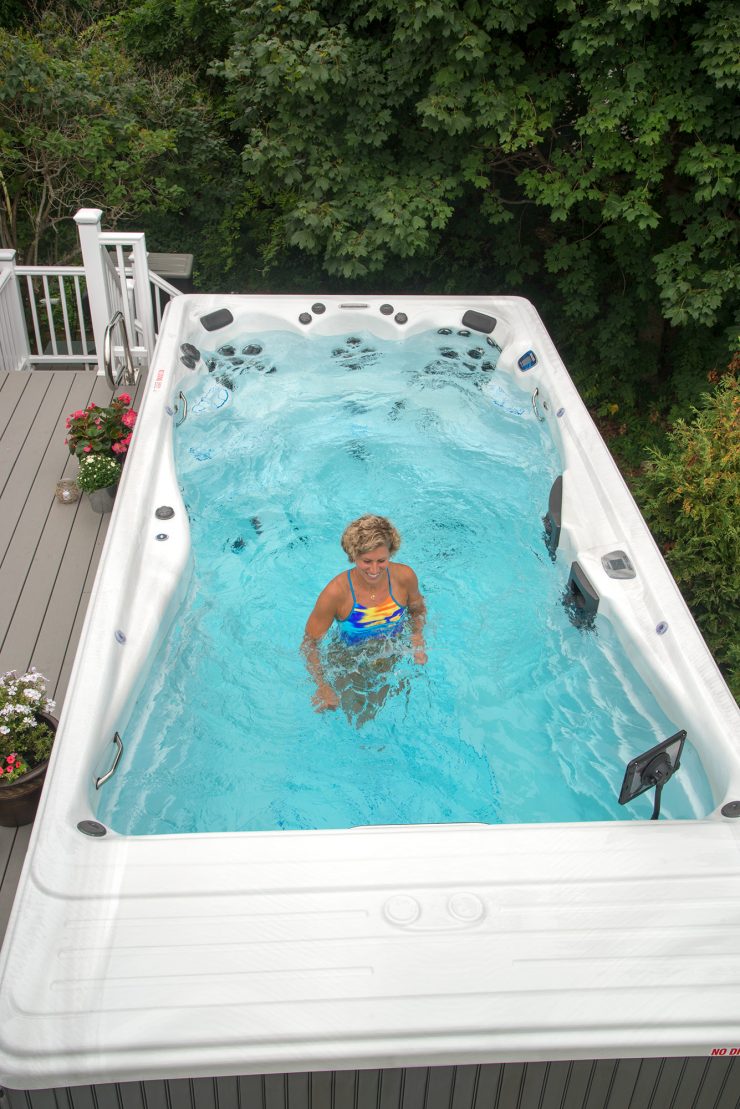When professional triathlete Timothy O’Donnell was preparing for the IRONMAN World Championships in Kailua-Kona, he was hesitant to discuss expectations for the run portion of the race. A foot injury had set him back during key weeks of training.
But O’Donnell, whose wife is Master Spas brand ambassador Mirinda Carfrae, was grateful to race. And he knew that he did everything he could to prepare himself, including water running.
Water running is not a new activity as many athletes, such as O’Donnell and marathoners Galen Rupp and Mo Farrah, have used it while injured.
However, exercisers of any levels can benefit from water running sessions. In a swim spa by Master Spas, you can set the pace by adjusting the current speed. And unlike a community pool, you are also in control of the water temperature!

Water Running Benefits
Less Impact
The buoyancy of water reduces the impact on your body. Running on the road can put stress on your joints, muscles, tendons and ligaments where as water running can offer a much needed break. Submerged up to your chest, water can “reduce your body weight” up to 70% and minimize the potential risk for injury.
Flexibility/Mobility
Water helps to improve blood flow to muscles, which promotes relaxation and tissue flexibility. The unique properties of water — buoyancy and resistance —can also help to improve mobility of your joints while running.
Better Posture
Water can act almost as a “second pair of hands” around your body, helping cue proper core control and body awareness during running. When we run on land, we are significantly influenced by gravity and momentum. Gravity and momentum are significantly reduced in water, providing a different feeling when running. Running in the water almost forces you to pay more attention and get more in touch with your body.
Your arms play an important role while running to help propel the body. If they are not positioned correctly, your running form can suffer. Additionally, your arms are influenced by the water’s resistance unlike on land. The arms should move smoothly through the water but because of the waters resistance it will also help to strengthen and tone the arm muscles as well.
Improved Strength
In life, we move in three planes of motion: front to back, side to side, and rotary. The water is the only environment that provides resistance in every direction. Running in the water engages different muscle recruitment patterns than land-based running. Thus, many runners find that their water runs produce a renewed sense of strength in their legs, core, and arms.
Cross Training
Athletes should be multi-dimensional in their approach to training. Rather than waiting until they get injured to get into the water, the water should can integrate it weekly.
Improved Recovery
The water is one of the best environments to perform active recovery. The waters hydrostatic pressure helps to improve blood flow to tired muscles, flush out lactic acid from the body and get your body prepared for the next day of training.

How to Run in the Water
Technique
Water level should be about chest deep but if it is a little higher or lower than that that will still work for you. Swim spas by Master Spas are available in two depths, and deep models are ideal for water running.
While you are running in the water, imagine that your body follows a “plumb” line at your profile. That is, if a line were drawn from the ear to the shoulder to the hip to the ankle. Periodically make sure that your body maintains this alignment.
When you begin running in the water the pattern will be much different than on land. You will find that you will have a high knee type motion rather than a long stride. Make sure you are not bouncing up and down in the water. As you incorporate the current system of the swim spa, you will find you will have a little more of an extended stride.
Using the Current
Running against the current provides increased resistance to your upper and lower body musculature and helps to help engage your core muscles and improve stabilization and running posture. By adjusting the intensity of the current you can challenge yourself with interval training or even sprinting.
Intensity
Water running does not have to feel like a slow jog or low-intensity effort. With the resistance of water, the harder you push the harder the water pushes you back. You can experiment with your intensity to get the most out of your workout. The talk test is a good measure of how hard you are working, especially in the water. When you’re doing a moderate-intensity activity, you can talk, but not sing, during the activity. If you’re doing vigorous-intensity activity, you will not be able to say more than a few words without pausing for a breath.
Water running is a great way add miles to your training as well as to keep your body healthy with less injury for years to come.
If you like this post …

Exercise ball routine for your swim spa
How Michael Phelps wins his day
The swimming pool alternative that makes it feel like summer all year long


